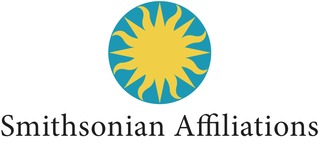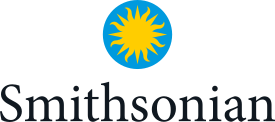The National Ocean Service (NOS), an office within the U.S. Department of Commerce National Oceanic and Atmospheric Administration (NOAA), is responsible for preserving and enhancing the nation's coastal resources and ecosystems along 95,000 miles (153,000 km) of shoreline bordering 3,500,000 square miles (9,100,000 km2) of coastal, Great Lakes, and ocean waters. Its mission is to "provide science-based solutions through collaborative partnerships to address evolving economic, environmental, and social pressures on our oceans and coasts." NOS works closely with many partner agencies to ensure that ocean and coastal areas are safe, healthy, and productive. National Ocean Service scientists, natural resource managers, and specialists ensure safe and efficient marine transportation, promote innovative solutions to protect coastal communities, and conserve marine and coastal places. NOS is a scientific and technical organization of 1,700 scientists, natural resource managers, and specialists in many different fields. NOS delivers a dynamic range of nationwide coastal and Great Lakes scientific, technical, and resource management services in support of safe, healthy, and productive oceans and coasts. NOS develops partnerships to integrate expertise and efforts across all levels of government and with other interests to protect, maintain, and sustain the viability of coastal communities, economies and ecosystems.

The Atlantic Oceanographic and Meteorological Laboratory (AOML), a federal research laboratory, is part of National Oceanic and Atmospheric Administration's (NOAA) Office of Oceanic and Atmospheric Research (OAR), located in Miami, Florida. AOML's research spans tropical cyclone and hurricanes, coastal ecosystems, oceans and human health, climate studies, global carbon systems, and ocean observations. It is one of seven NOAA Research Laboratories (RLs).

Marine conservation, also known as ocean conservation, refers to the study of marine plants and animal resources and ecosystem functions. It is the protection and preservation of ecosystems in oceans and seas through planned management in order to prevent the exploitation of these resources. Marine conservation is driven by the manifested negative effects being seen in our environment such as species loss, habitat degradation and changes in ecosystem functions and focuses on limiting human-caused damage to marine ecosystems, restoring damaged marine ecosystems, and preserving vulnerable species and ecosystems of the marine life. Marine conservation is a relatively new discipline which has developed as a response to biological issues such as extinction and marine habitats change.

Marine ecosystems are the largest of Earth's aquatic ecosystems and are distinguished by waters that have a high salt content. These systems contrast with freshwater ecosystems, which have a lower salt content. Marine waters cover more than 70% of the surface of the Earth and account for more than 97% of Earth's water supply and 90% of habitable space on Earth. Marine ecosystems include nearshore systems, such as the salt marshes, mudflats, seagrass meadows, mangroves, rocky intertidal systems and coral reefs. They also extend outwards from the coast to include offshore systems, such as the surface ocean, pelagic ocean waters, the deep sea, oceanic hydrothermal vents, and the sea floor. Marine ecosystems are characterized by the biological community of organisms that they are associated with and their physical environment.

The Census of Marine Life was a 10-year, US $650 million scientific initiative, involving a global network of researchers in more than 80 nations, engaged to assess and explain the diversity, distribution, and abundance of life in the oceans. The world's first comprehensive Census of Marine Life — past, present, and future — was released in 2010 in London. Initially supported by funding from the Alfred P. Sloan Foundation, the project was successful in generating many times that initial investment in additional support and substantially increased the baselines of knowledge in often underexplored ocean realms, as well as engaging over 2,700 different researchers for the first time in a global collaborative community united in a common goal, and has been described as "one of the largest scientific collaborations ever conducted".

The Museum of the Earth is a natural history museum located in Ithaca, New York. The museum was opened in 2003 as part of the Paleontological Research Institution (PRI), an independent organization pursuing research and education in the history of the Earth and its life. Both PRI and the Museum of the Earth are formally affiliated with Cornell University. The Museum of the Earth is home to earth-science exhibits and science-related art displays with a focus on the concurrent evolution of the Earth and life.
Ocean Conservancy is a nonprofit environmental advocacy group based in Washington, D.C., United States. The organization helps formulate ocean policy at the federal and state government levels based on peer reviewed science. Ocean Conservancy is one of the few organizations that help protect wildlife in the ocean.

The Coral Triangle is a roughly triangular area of the tropical marine waters of Indonesia, Malaysia, Papua New Guinea, Philippines, Solomon Islands and Timor-Leste that contain at least 500 species of reef-building corals in each ecoregion. This region encompasses portions of two biogeographic regions: the Indonesian-Philippines Region, and the Far Southwestern Pacific Region. The Coral Triangle is recognized as the global centre of marine biodiversity and a global priority for conservation. It is also called the "Amazon of the seas" and covers 5.7 million square kilometres (2,200,000 sq mi) of ocean waters. Its biological resources sustain the lives of over 120 million people. According to the Coral Triangle Knowledge Network, about $3 billion in fisheries exports and another $3 billion in coastal tourism revenues are derived as annual foreign exchange income in the region.
Defying Ocean's End (DOE) is a global agenda for action in marine conservation compiled in a 2004 Island Press book. It is also the title of a 2003 Los Cabos (Mexico) conference, where the agenda was formulated.
The Census of Coral Reefs (CReefs) is a field project of the Census of Marine Life that surveys the biodiversity of coral reef ecosystems internationally. The project works to study what species live in coral reef ecosystems, to develop standardized protocols for studying coral reef ecosystems, and to increase access to and exchange of information about coral reefs scattered throughout the globe.

Coral reef protection is the process of modifying human activities to avoid damage to healthy coral reefs and to help damaged reefs recover. The key strategies used in reef protection include defining measurable goals and introducing active management and community involvement to reduce stressors that damage reef health. One management technique is to create Marine Protected Areas (MPAs) that directly limit human activities such as fishing.

Rising ocean temperatures and ocean acidification are radically altering aquatic ecosystems. Climate change is modifying fish distribution and the productivity of marine and freshwater species. This has impacts on the sustainability of fisheries and aquaculture, on the livelihoods of the communities that depend on fisheries, and on the ability of the oceans to capture and store carbon. The effect of sea level rise means that coastal fishing communities are in the front line of climate change, while changing rainfall patterns and water use impact on inland (freshwater) fisheries and aquaculture. The full relationship between fisheries and climate change is difficult to explore due to the context of each fishery and the many pathways that climate change affects.

Jeremy Bradford Cook Jackson is an American ecologist, paleobiologist, and conservationist. He is an emeritus professor at the Scripps Institution of Oceanography, senior scientist emeritus at the Smithsonian Institution, and visiting scientist at the American Museum of Natural History Center for Biodiversity and Conservation. He studies threats and solutions to human impacts on the environment and the ecology and evolution of tropical seas. Jackson has more than 170 scientific publications and 11 books, with nearly 40,000 citations listed on Google Scholar.
Jason deCaires Taylor is a British sculptor and creator of the world's first underwater sculpture park – the Molinere Underwater Sculpture Park – and underwater museum. He is best known for installing site-specific underwater sculptures which develop into artificial coral reefs integrating his skills as a sculptor, marine conservationist, underwater photographer and scuba diving instructor. His works in Grenada have been listed among the Top 25 Wonders of the World by National Geographic. His most ambitious projects to date are the creation of the world's largest underwater sculpture museum, the Cancún Underwater Museum, situated off the coast between Cancún and Isla Mujeres, Mexico, and Ocean Atlas (2014), a 5-metre tall, 60-ton sculpture off the Bahamas. Taylor is currently based on the island of Lanzarote, Spain, working on a major new underwater museum for the Atlantic Ocean.
The Smithsonian Marine Station at Fort Pierce is a research center that specializes in Floridian marine ecosystems and lifeforms. The research is focused mostly on the Indian River Lagoon and also on the offshore waters of Florida's central and east coast. The first director of the station was Mary Rice, who was also instrumental in its founding.

Smithsonian Affiliations is a division of the Smithsonian Institution that establishes long-term partnerships with non-Smithsonian museums and educational and cultural organizations, in order to share collections, exhibitions and educational strategies and conduct joint research.
Carole C. Baldwin is a research zoologist, curator of fishes, and the vertebrate zoology department chair at the National Museum of Natural History. She researches the diversity and evolution of coral reef and deep sea fishes through integrative taxonomy. She is on the board of directors of the National Aquarium, DC venue. She is a senior author on the educational seafood cookbook One Fish, Two Fish, Crawfish, Bluefish - The Smithsonian Sustainable Seafood Cookbook, and the principal investigator on the Deep Reef Observation Project (DROP) which researches reefs to 300 meter depths. She was inducted into the Women Divers Hall of Fame in 2003.















